In the intricate tapestry of modern pet ownership, cat training has emerged as a cornerstone, offering a transformative journey that extends far beyond the acquisition of mere tricks. As feline companionship becomes an integral part of our lives, understanding the profound significance of cat training unveils a world of possibilities for fostering a harmonious bond.
Brief Overview of the Importance of Cat Training
Cat training transcends the conventional boundaries of teaching commands—it’s a dynamic process contributing to the overall well-being and contentment of your feline friend. At its core, cat training serves as a conduit for effective communication, enabling a deeper understanding between you and your cat. Gone are the days when training was viewed as a novelty; today, it is an essential aspect of responsible pet ownership.
The importance of cat training becomes evident in its multifaceted impact. Beyond the surface level of obedience, it provides mental stimulation crucial for a cat’s cognitive health. Mental engagement through training exercises helps prevent boredom-related behavioral issues, such as excessive scratching or aggression. A well-trained cat is more adaptable to changes in its environment, easing the integration process into your household and facilitating socialization with other pets.
The Benefits of Training Your Cat
The benefits of investing time and effort into training your cat extend far beyond the realm of a well-behaved companion. Picture a socially adept cat, effortlessly navigating interactions with family members, friends, and fellow pets. Trained cats are not just obedient; they become ambassadors of feline charm, receiving positive attention and fostering enjoyable social connections.
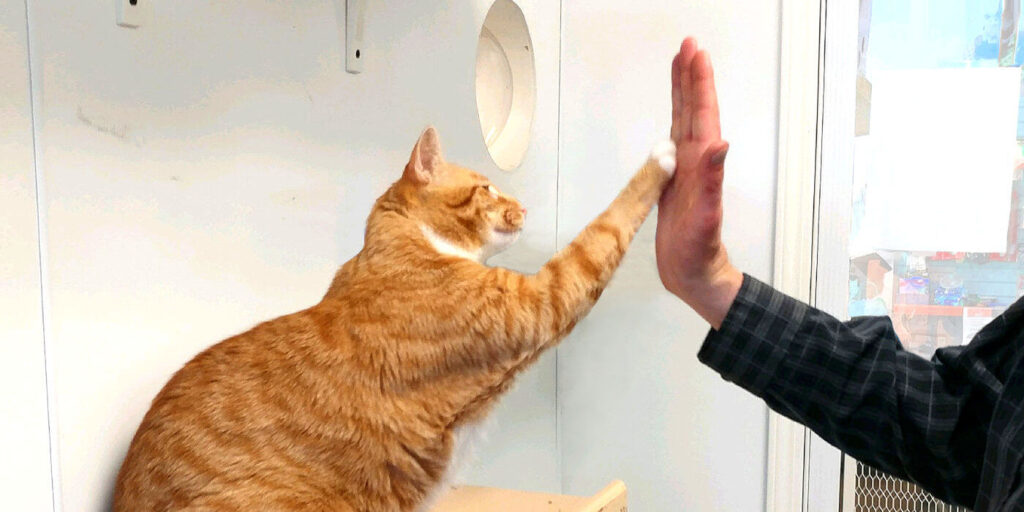
Source: happycatshaven.org
Moreover, the advantages extend to the mental and emotional well-being of your cat. Training contributes to a healthier and happier life by alleviating stress and providing a constructive outlet for their natural instincts. From basic commands to advanced tricks, a trained cat showcases intelligence and responsiveness, solidifying the unique bond between owner and pet.
Setting Realistic Expectations for Cat Training
Embarking on the cat training journey necessitates a realistic mindset that acknowledges the individuality of each feline companion. Cats, known for their diverse personalities, may not conform to a one-size-fits-all approach. Setting realistic expectations involves recognizing and respecting these individual differences, understanding that the learning pace and response to training methods vary.
Patience becomes the cornerstone of successful cat training. Each cat has its own quirks, preferences, and unique learning curve. Setting achievable goals and understanding that progress may be gradual ensures a positive training experience. Flexibility in methods, tailored to your cat’s temperament, ensures that training remains an enjoyable and cooperative endeavor for both you and your feline friend.
In conclusion, cat training isn’t a mere series of commands; it’s a dynamic relationship-building process with enduring benefits. By comprehending the importance, acknowledging the myriad benefits, and setting realistic expectations, cat owners embark on a journey that enriches the lives of both pet and human. The adventure is as rewarding as the destination, creating a harmonious coexistence that defines the essence of cat ownership.
Understanding Your Cat
Cats, known for their enigmatic charm, communicate in subtle ways that may elude many pet owners. Mastering the art of understanding your cat is fundamental to successful training. This section delves into the nuances of feline behavior, decoding their body language and vocalizations. Additionally, we explore the significance of recognizing your cat’s unique personality and temperament, emphasizing the crucial role of positive reinforcement in fostering a cooperative and happy feline companion.
Cat Behavior and Communication
1. Body Language
Cats express themselves primarily through body language, a rich tapestry of signals that reveal their mood and intentions. From the flick of a tail to the position of their ears, understanding these cues is vital for effective communication. This article deciphers common feline body language, empowering you to interpret your cat’s feelings and respond appropriately during training sessions.
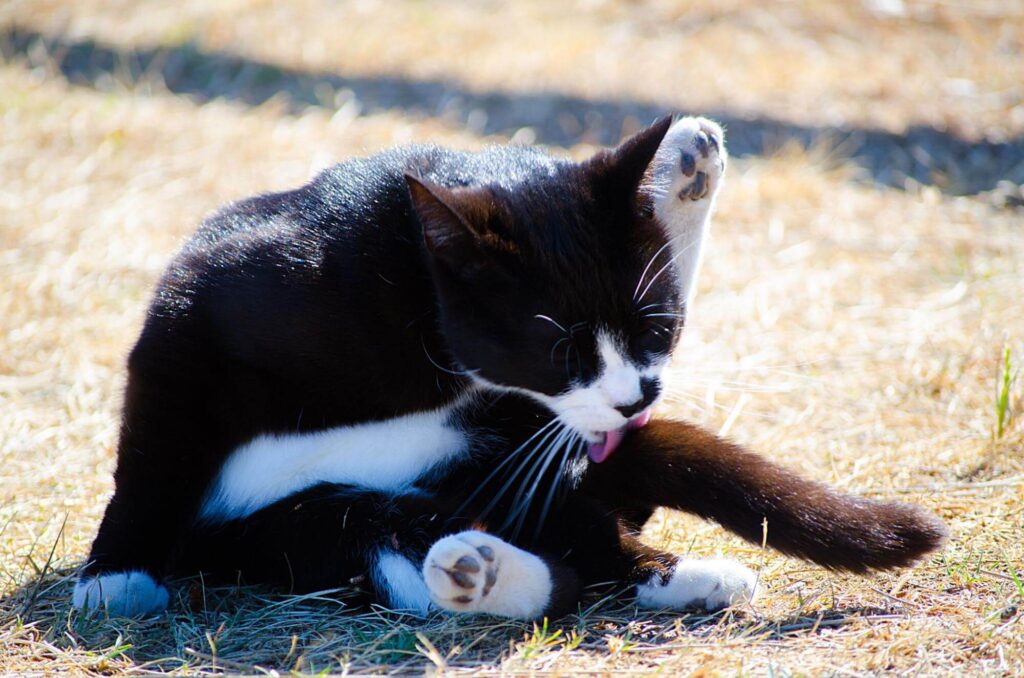
Source: vecteezy.com
2. Vocalizations
Cat vocalizations, ranging from purrs to meows, convey a myriad of messages. Each meow and chirp serves as a form of communication, and deciphering these vocal cues is integral to grasping your cat’s needs and desires. Unravel the mysteries of feline vocalizations to strengthen the bond between you and your cat during training exercises.
Knowing Your Cat’s Personality and Temperament
Understanding that each cat is a unique individual with distinct personality traits is key to effective training. This section guides you in identifying your cat’s temperament, whether they are outgoing, reserved, or somewhere in between. Tailoring your training approach to align with your cat’s specific characteristics ensures a more personalized and successful training experience.
Importance of Positive Reinforcement in Cat Training
Positive reinforcement is the cornerstone of successful cat training. This method involves rewarding desired behaviors, creating a positive association with the training process. Explore the science behind positive reinforcement and learn how to implement this technique effectively to motivate your cat, making the training experience enjoyable for both of you.
Essential Cat Training Commands
Embarking on the journey of cat training involves mastering a set of essential commands that enhance the bond between you and your feline companion. This section focuses on key commands – Sit, Stay, Come, and Paw/Shake Hands – providing a step-by-step guide, addressing common challenges, and offering insights to make the training experience enjoyable and effective.
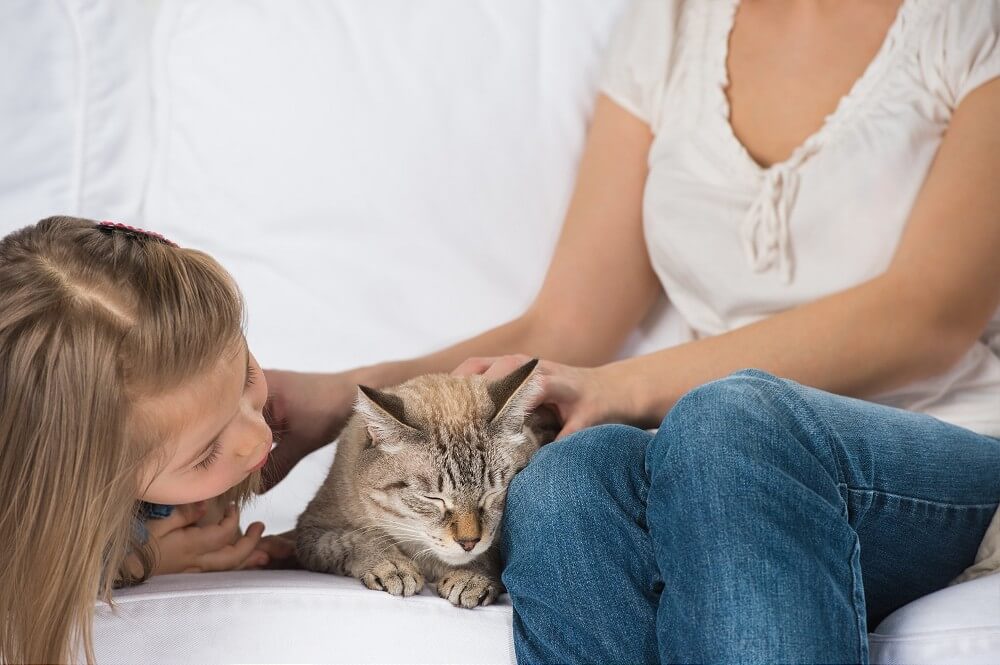
Sit
- Step-by-Step Guide on Teaching Your Cat to Sit
Teaching cats to sit is a foundational command that forms the basis for more advanced training. This step-by-step for cat sit training guide breaks down the process, from initial introductions to reinforcing the behavior. Discover effective techniques and cues that encourage your cat to sit on command, creating a cooperative and well-behaved pet.
- Common Challenges in Cat Training and How to Overcome Them
Cat training isn’t without its challenges. This section addresses common obstacles encountered during sit command training, offering practical solutions to overcome resistance and foster a positive learning environment for your cat.
Stay
- Teaching Your Cat to Stay in One Place
The “Stay” command is essential for ensuring your cat’s safety and control in various situations. Explore a comprehensive guide on teaching your cat to stay in one place, emphasizing patience and consistency to instill this crucial behavior.
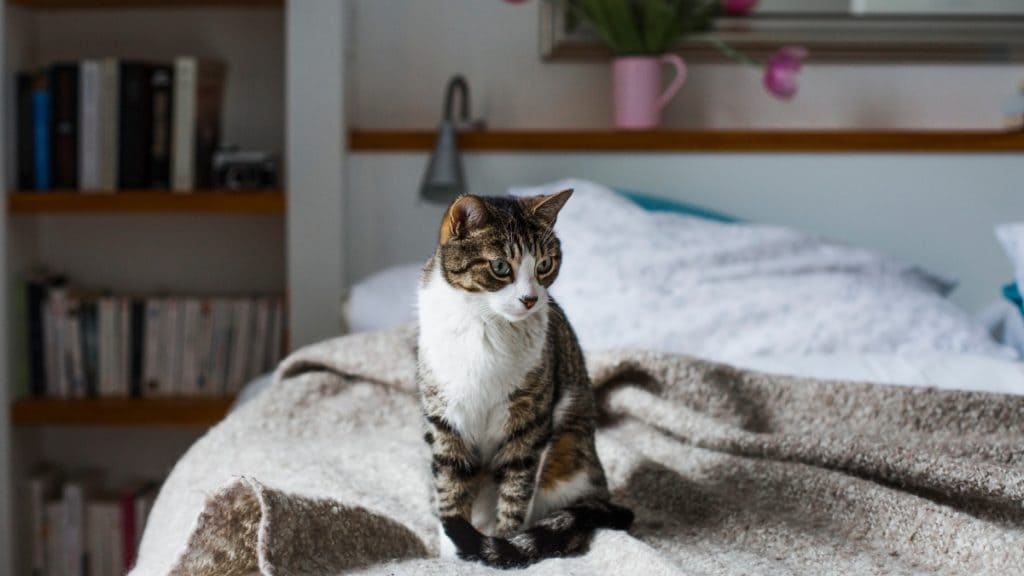
Source: be.chewy.com
2. Reinforcing the Cat Stay Command
Once your cat has grasped the basics of staying in place, reinforcing the command becomes paramount. Uncover effective reinforcement techniques, including positive rewards and consistent training practices, to solidify the stay command in your cat’s repertoire.
Come
- Training Your Cat to Come When Called
Teaching your cat to come when called is a valuable command that enhances communication and safety. Explore a step-by-step approach to training your cat to respond promptly to the come command, fostering a strong connection between you and your pet.
- Reliable Cat Come Command
Building reliability in the come command ensures your cat responds consistently in various situations. Discover techniques for reinforcing the come command, making it a reliable and trusty skill in your cat’s repertoire.
Paw/Shake Hands
- Fun and Useful Command for Interaction
The paw/shake hands command adds a delightful touch to your cat’s repertoire, making interactions more engaging and enjoyable. Learn how to introduce this fun command, creating positive associations and strengthening your bond with your feline friend.
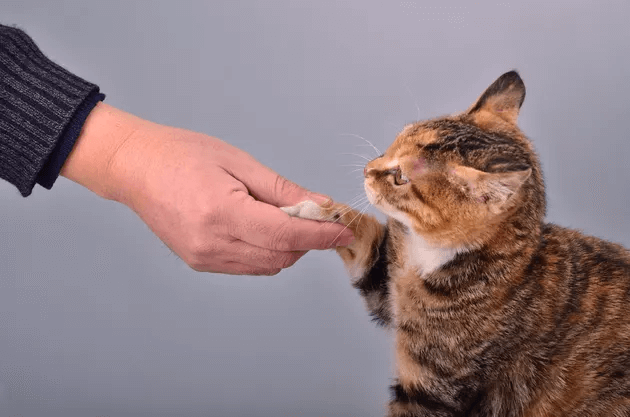
Source: cuteness.com
2. Encouraging the Paw/Shake Hands Behavior
Encouraging and reinforcing the paw/shake hands behavior involves patience and positive reinforcement. Explore techniques to cultivate this charming command, turning it into a delightful and interactive experience for both you and your cat.
Techniques for Effective Cat Training: A Guide for Optimal Results
Unlock the secrets to successful cat training with these proven techniques designed to strengthen your bond with your feline companion. Explore the power of positive reinforcement, the precision of clicker training, and the crucial role of consistency in achieving desirable training outcomes for your cat.
Positive Reinforcement
- Cat Training Rewards and Treats: Elevating Cat Training with Motivational Tools
Discover the significance of incorporating treats into your training routine. Learn how to choose treats that resonate with your cat’s preferences and the art of timing rewards effectively to reinforce positive behaviors. Uncover the impact of using rewards and treats as powerful motivators in the training process.
- Affectionate Gestures for Cats: Building a Positive Connection
Delve into the world of verbal praise and affectionate gestures as essential elements of positive reinforcement. Understand how creating a nurturing environment with praise and affection motivates your cat during training sessions. Explore the psychological benefits of positive interactions in the training process.
Clicker Training
- Introduction to Clicker Training for Cats: Precision in Communication
Explore the fundamentals of clicker training—a precision-based method utilizing a handheld device. Understand how the distinct sound of the clicker marks desired behaviors, enhancing communication between you and your cat. Discover the effectiveness of clicker training in creating a focused and responsive learning environment.

Source: catschool.co
2. Incorporating Clicker Training into Commands: Enhancing Learning
Delve into the integration of clicker training with essential commands. Learn how the clicker enhances the learning process, making communication more precise and reinforcing desired behaviors effectively. Understand the application of clicker training in strengthening the bond between you and your cat.
Troubleshooting Common Issues: Solutions for Successful Cat Training
Encountering challenges during cat training is common, but overcoming them is key to fostering a well-behaved and responsive feline companion. This section addresses prevalent issues and provides actionable solutions, ensuring a harmonious training experience.
Dealing with Resistance and Stubborn Behavior
- Overcoming Cat Training Resistance: When faced with resistance or stubborn behavior during cat training, it’s crucial to approach the situation with patience and adaptability. Explore effective strategies to decode the reasons behind your cat’s resistance and learn how to transform training into a positive and cooperative interaction.
Adapting Training Techniques to Different Cat Personalities
- Tailoring Techniques to Cat Personalities: Cats, like humans, have unique personalities. Discover how to tailor your training techniques to align with your cat’s individual temperament. This personalized approach ensures that your training sessions are not only effective but also enjoyable for your cat.
Recognizing When to Seek Professional Help
- When to seek help for Cat Behaviour Issues: In some instances, seeking professional help becomes necessary. Learn to recognize signs that indicate the need for expert intervention and discover valuable resources to connect with certified cat trainers or behaviorists.
Facing challenges in cat training is a natural part of the process. By understanding and implementing these troubleshooting strategies, you’ll be better equipped to navigate through obstacles and achieve successful training outcomes.
Conclusion: Nurturing a Lasting Bond Through Cat Training
As we conclude this illuminating exploration into cat training, it’s paramount to recap the invaluable lessons and insights gained throughout this journey. This conclusion not only reinforces the essential cat training commands and techniques but also serves as a source of encouragement for cat owners, emphasizing the profound bond forged between cat and owner through the art of training.
Recap of Essential Cat Training Commands and Techniques
Throughout this guide, we’ve delved into the foundational commands that form the bedrock of effective cat training. From the fundamental “Sit” command to the more advanced yet delightful “Paw/Shake Hands,” each command contributes to a well-rounded and cooperative feline companion. The step-by-step guides, troubleshooting tips, and real-life scenarios provided offer a comprehensive toolkit for cat owners, ensuring a successful training experience.
Recall the significance of “Sit,” not just as a trick but as a foundational behavior that opens the door to further learning. The “Stay” command, a testament to discipline and control, ensures your cat’s safety in various situations. “Come” becomes not just a command but a lifeline, strengthening the communication between you and your pet. Finally, the playful “Paw/Shake Hands” command adds a touch of joy to your interactions, showcasing the intelligence and adaptability of your well-trained feline friend.

Source: Pinterest
Revisit the techniques discussed in positive reinforcement and clicker training. These aren’t mere methods; they are powerful tools that create a positive association with training, fostering a cooperative and engaged learner. The emphasis on consistency serves as the guiding principle, reinforcing the importance of regular training sessions and the establishment of a routine.
Encouragement for Cat Owners to be Patient and Persistent
To every cat owner undertaking or deep into the training journey, remember that patience and persistence are your greatest allies. Cats, with their independent spirits, may not always adhere to our timelines, and that’s perfectly normal. The journey of cat training is a marathon, not a sprint.
Celebrate small victories. Each successfully executed command, every instance of improved behavior, is a step forward. The process of training is a mutual learning experience—understand your cat’s pace, and allow the journey to unfold organically. It’s in these moments of patience and perseverance that the most profound connections are forged.
Adaptability is key. Cats are individuals with unique personalities, and what works for one may not work for another. If challenges arise, adjust your approach, try new methods, and observe how your cat responds. It’s in the ebb and flow of the training process that you’ll discover the most effective techniques for your specific feline companion.
Remember, the bond developed through training is not just about commands and obedience; it’s a testament to your commitment and understanding of each other. Your cat isn’t just learning tricks; they’re building trust in you as their caregiver. The mutual respect cultivated through training forms the foundation of a harmonious and fulfilling relationship.
The Bond Between Cat and Owner Through Training
Beyond the tangible outcomes of commands mastered and behaviors improved, the true essence of cat training lies in the profound bond that blossoms between cat and owner. Through the shared experiences of training sessions, a unique language develops—a silent understanding that transcends words.
Training becomes a shared adventure, a journey where both parties grow and learn. The moments of triumph, the instances of playful interaction during training, all contribute to a tapestry of memories that strengthen the emotional connection. This bond extends beyond the training mat, influencing every aspect of your relationship.
In training, you’re not just shaping your cat’s behavior; you’re becoming attuned to their needs and preferences. The trust built during training sessions translates into a cat who looks to you for guidance, comfort, and companionship. It’s a reciprocal relationship where your cat becomes not just a pet but a cherished member of the family.
In conclusion, the journey of cat training is a tapestry woven with threads of patience, persistence, and unwavering companionship. As you celebrate the successes, navigate the challenges, and relish the unique moments shared with your feline friend, remember that the true treasure lies in the bond you’ve nurtured. Happy training!
Additional Resources: Enhancing Your Cat Training Journey
As you continue your quest for cat training excellence, here’s a curated selection of resources to expand your knowledge, seek expert guidance, and refine your skills in nurturing a well-trained and contented feline companion.
Recommended Books, Websites, or Videos on Cat Training
- Books for In-Depth Knowledge: Explore authoritative books like “The Trainable Cat” by John Bradshaw and Sarah Ellis or “Think Like a Cat” by Pam Johnson-Bennett for comprehensive insights into cat behavior and effective training methods.
- Websites and Videos for Practical Guidance: Access reputable websites such as The Cat Coach (catbehaviorassociates.com) or Jackson Galaxy’s YouTube channel for practical tips, tutorials, and expert advice on various aspects of cat training.
Links to Reputable Cat Behavior Organizations
- Certified Cat Trainers: Connect with certified cat trainers or behaviorists through organizations like the International Association of Animal Behavior Consultants (IAABC) or the American Association of Professional Cat Trainers (AAPCT) for personalized guidance and professional assistance.
Tips for Ongoing Learning and Improvement in Cat Training Skills
- Attend Cat Training Workshops and Seminars: Look for local workshops or seminars conducted by renowned cat trainers or behaviorists. These events provide hands-on learning experiences and opportunities to interact with experts.
- Practice and Patience: Never stop learning from your cat! Every interaction is a chance to improve your understanding and refine training techniques. Embrace each session with patience and an open mind.
Expand your knowledge, seek guidance from trusted professionals, and continuously hone your skills to create a harmonious and fulfilling bond with your feline companion. These resources serve as stepping stones towards a deeper understanding of your cat’s behavior and fostering a lifelong connection built on trust and communication.




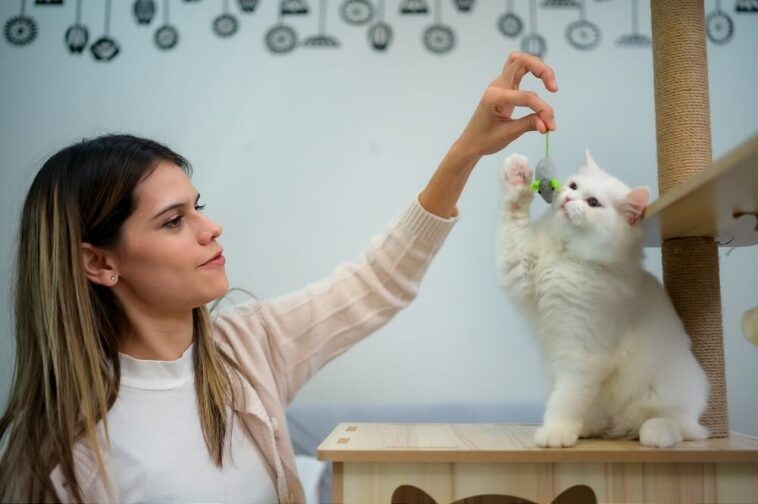


GIPHY App Key not set. Please check settings